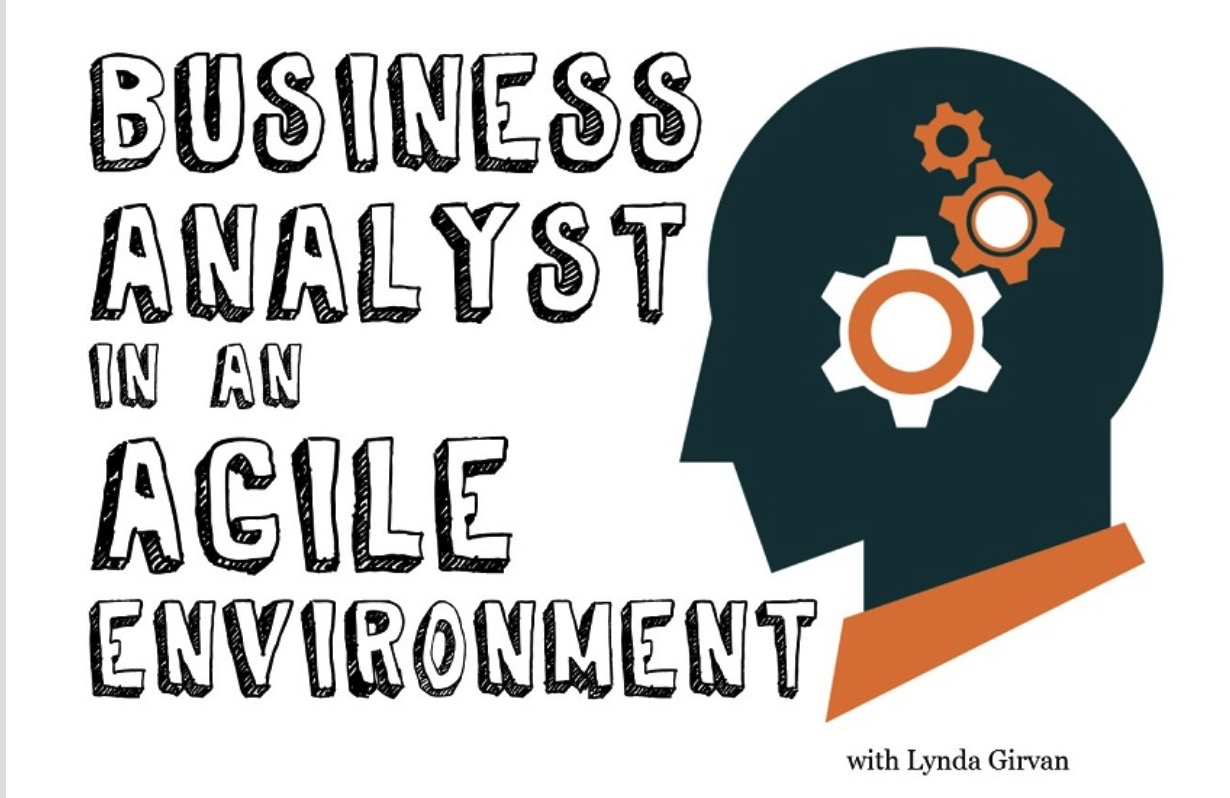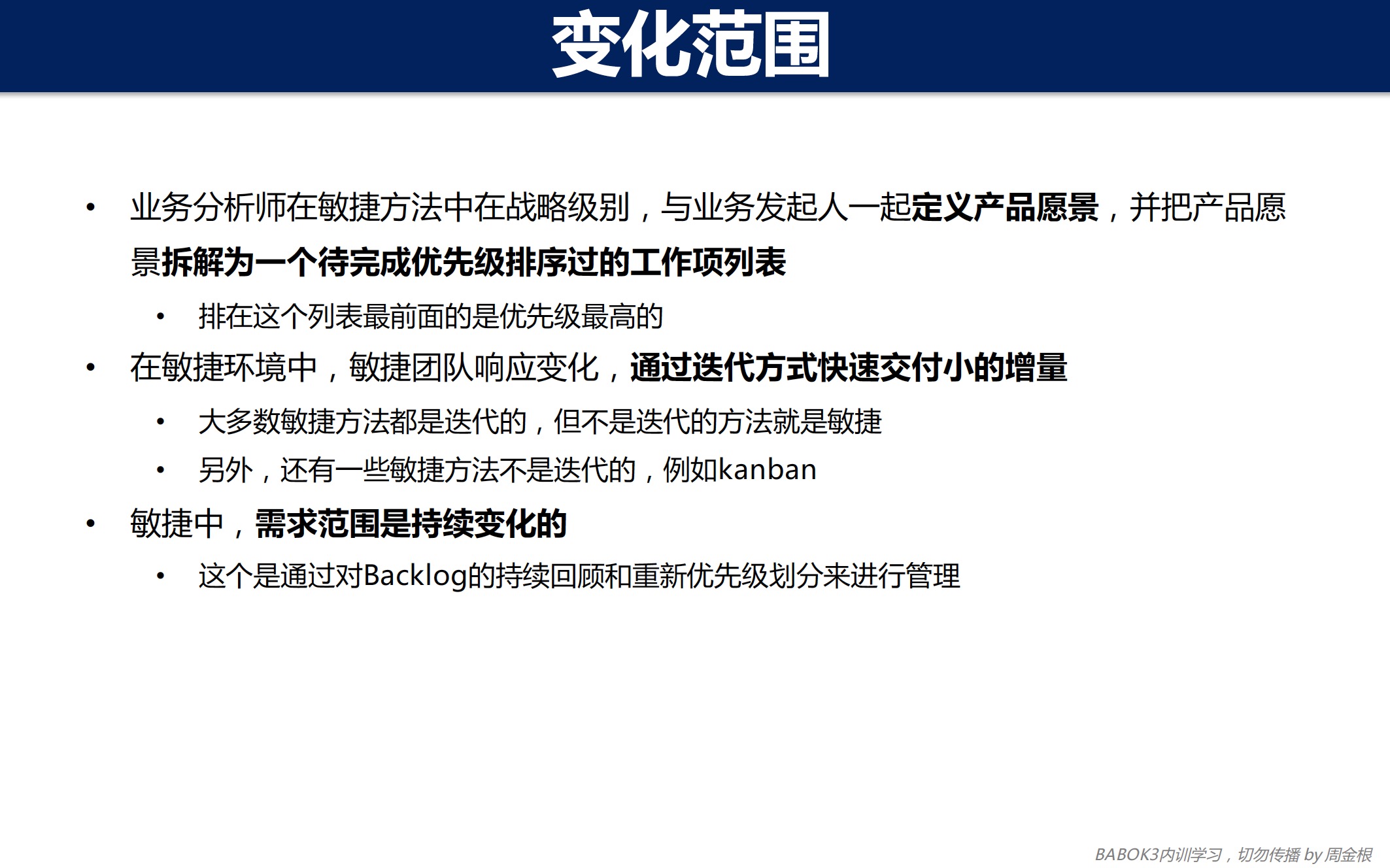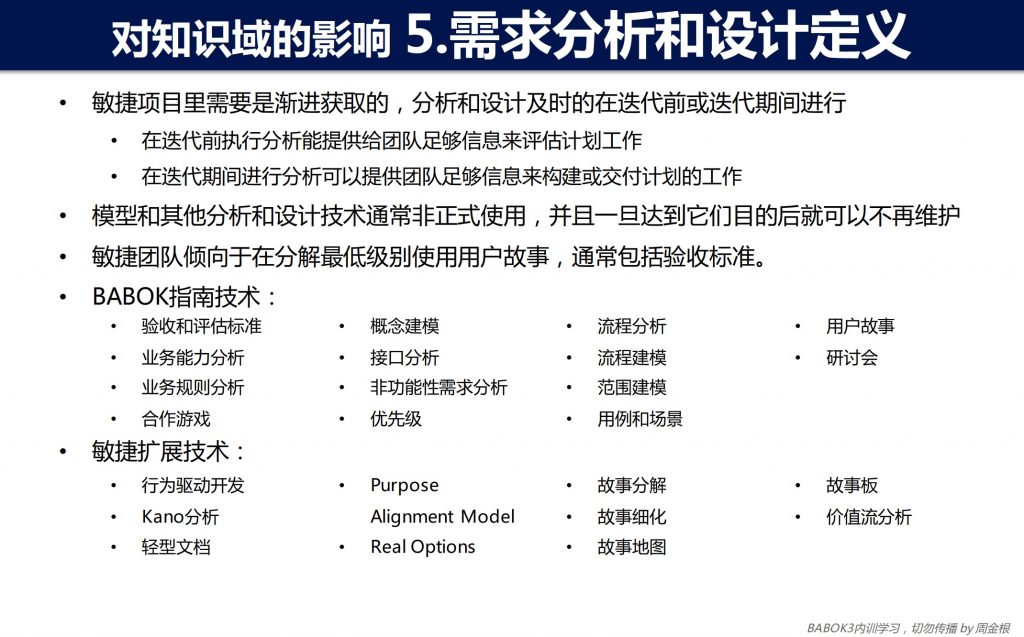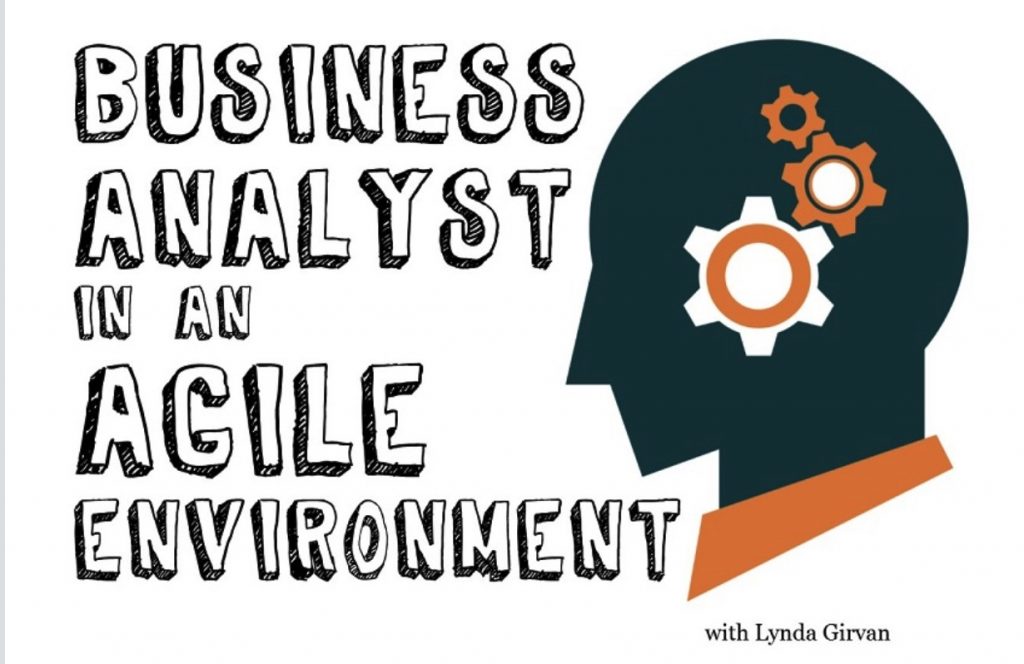
In this episode, author Lynda Girvan discusses how BAs can succeed in Agile environments by applying a lean and adaptive approach.
After listening to this episode, you’ll understand:
- How to make your BA process more Agile
- The three ways of thinking that lead to success in Agile
- The difference between real Agile and a series of small waterfalls
音频下载:http://traffic.libsyn.com/masteringbusinessanalysis/MBA124.mp3
Do we need Business Analysts in Agile? It depends.
The skill of analysis is certainly needed in Agile product development. Either the people within the team need to develop their business analysis skills or the Business Analyst needs to become more “T” shaped.

Outside of product development, specialized Business Analysts can contribute even in Agile environments.
The Agile Business Analyst
Business Analysts in an agile environment do many of the same things that they do in a traditional waterfall environment, just with a different mindset.
You still create models, but do just enough just in time instead of creating everything upfront. You still document information, but do so with a service thinking approach.
The skills that you’ve developed as a traditional BA are still valuable in Agile if you apply an Agile mindset. The Agile mindset includes Lean thinking, service thinking, and systems thinking.
Lean Thinking
Lean is about reducing waste to deliver value. There can be a lot of waste in traditional business analysis activities and Lean thinking seeks to reduce that waste.
One form of waste is overproduction. When we create monolithic requirements documents (many features of which are never used), that’s a form of overproduction.
Over processing is another form of waste. This is seen when we provide more detail that is needed.
Partially done work (e.g., incomplete models or those that don’t provide value) is another form of waste because this becomes inventory that we now need to store and maintain.
Service Thinking
Service thinking is the concept that we can’t deliver value. We can only propose value. Once we deliver something, we can get feedback from the customer to determine if it was of value to them.
If we understand that concept, we can get into value co-creation. This is when we understand who the customer is and understand what their needs are and what’s valuable to them.
Value co-creation involves tight collaboration between the team and customers.
Systems Thinking
Systems thinking is about being able to see all of the interrelated parts. These parts need to work together.
This approach helps you to avoid silos. Systems thinking also helps you to understand how changes to one part of the system affect other parts.
Agile teams often focus on one product and fail to see the wider implications across the organization.
All of these concepts lead to one thing: Shortening the loop between concept and delivery. Requirements are just a means to an end. We need to figure out how to analyze just enough to deliver something and get feedback so we can learn and adapt.
Listen to the full episode for more on how to prioritize work, the difference between Agile and a series of small waterfall efforts, how to make your requirements more agile, and how to succeed in an Agile environment.
Start being Agile
Apply Agile as a mindset. Think about how you can apply Lean thinking, service thinking, and systems thinking to your work. Forget about frameworks and start being agile.

转:https://masteringbusinessanalysis.com/mba124-business-analyst-agile-environment/
